2023 Lucid Air Touring: What We Learned Driving a More Affordable Air


This Lucid Air Touring is certainly the most affordable version we’ve driven, behind the $170,000 Dream Edition Performance and $140,000 Grand Touring. Yes, “affordable” in this sense is still about $100,000 as configured, but with our third take on this all-electric sedan, we performed our standardized cargo and child-safety seat fitment tests, charged at home and at a DC fast charger, and just broadly spent more time living with the car. Here’s what we learned about the Lucid Air Touring.
Related: 2024 Lucid Air: More Options, Greater Choice, $78,900 Base Price
Lucid Air Touring Vs. Grand Touring
At the time of testing, the 2023 Air Touring we drove started at $96,500 (all prices include $1,500 destination charge), though for 2024, Lucid lowered pricing on the Touring, which is available for ordering now and starts at $87,400. The Touring has a smaller-capacity, lower-voltage battery (92 kilowatt-hours, 700 volts) than the Grand Touring (112 kWh, 900 volts), which, for 2023, starts at $127,100 before discounts; lower pricing is expected for the 2024 Grand Touring and will be announced in early 2024. Equipped with the standard 20-inch wheels like on our 2023 Air Touring test car, you’re not getting the headline 400-500 miles of rated range as in other Airs with the larger battery or available smaller wheels.
Even so, the “only” 384 miles of EPA-rated range of our test car is more than just about every other electric car out there. And on the plus side, the Touring’s smaller physical battery size results in a deeper footwell for backseat passengers, which means there’s an inch more rear legroom in it (37.6 inches) than in the Grand Touring.
The Air Touring also forgoes 199 horsepower versus the base Grand Touring (620 hp versus 819 hp), as well as some DC fast-charging power and potential speed (250 kW maximum versus 300 kW, taking a claimed 15 minutes to add 200 miles versus 12 minutes in optimal conditions). On the feature side, the 2023 Air Grand Touring adds massaging 12-way adjustable seats versus nonmassaging 10-way ones, has a standard glass roof that’s optional on the Touring, and there are unique interior patterns and fabrics, including simulated suede on the dashboard. For 2024, the Lucid Air Touring’s standard equipment shifts a bit with 19-inch wheels and a claimed 411 miles of range, plus newly standard 12-way power front seats; on the Grand Touring, massaging seats and the glass canopy roof become optional instead of standard.
Related Video:
Cargo Room
The Air sedan performed well in our standardized cargo test despite the rear cargo area being a trunk and not a hatchback (as in the Model S). There’s not a lot of open space for a single large item because of the trunk layout, but the large covered bin in the trunk and wide trunk opening mean there’s a generous amount of space if you have lots of small-to-medium-size things to bring along, such as luggage. Also, the cargo load-in height is low to the ground, making it easy to load items into the back.
The Lucid Air’s front trunk is massive and, like the trunk, can use a divider to split it into two compartments. We measured 18.21 cubic feet in the trunk and 5.56 cubic feet in the frunk; in comparison, the Model S has 20.9 cubic feet behind the backseat and 2.0 cubic feet in the frunk.
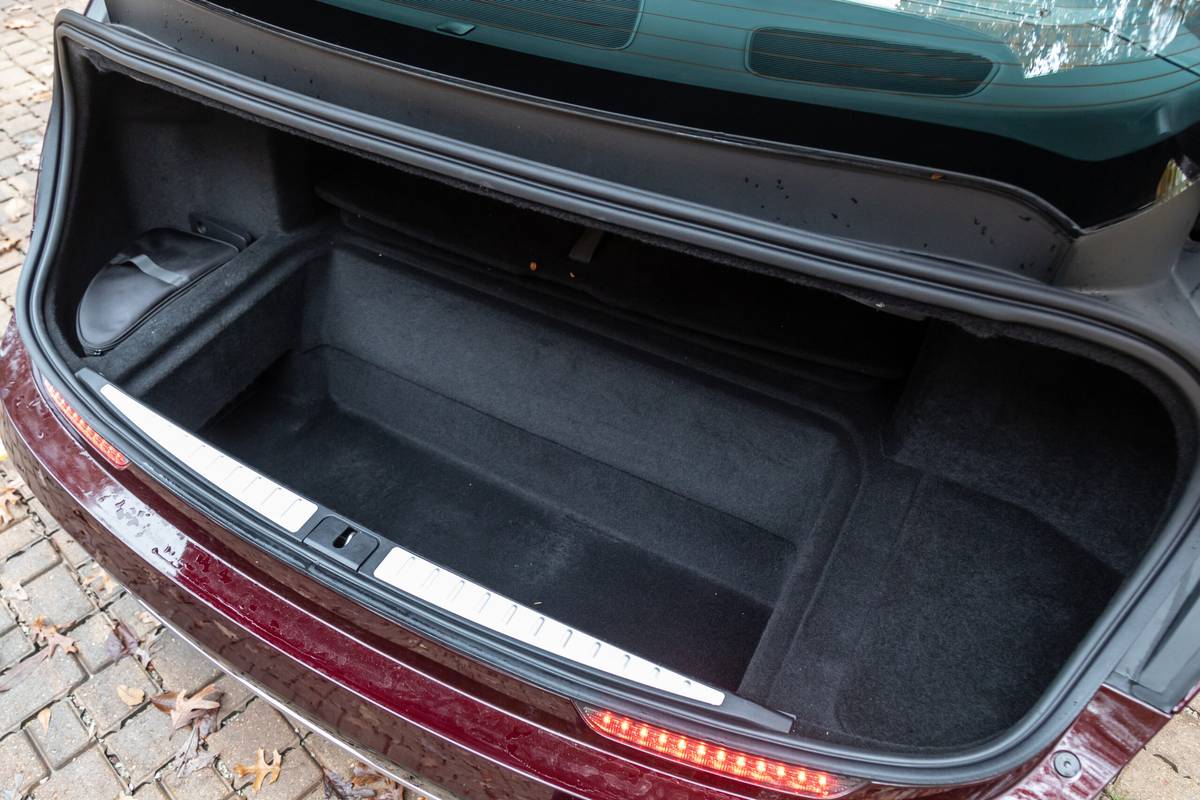

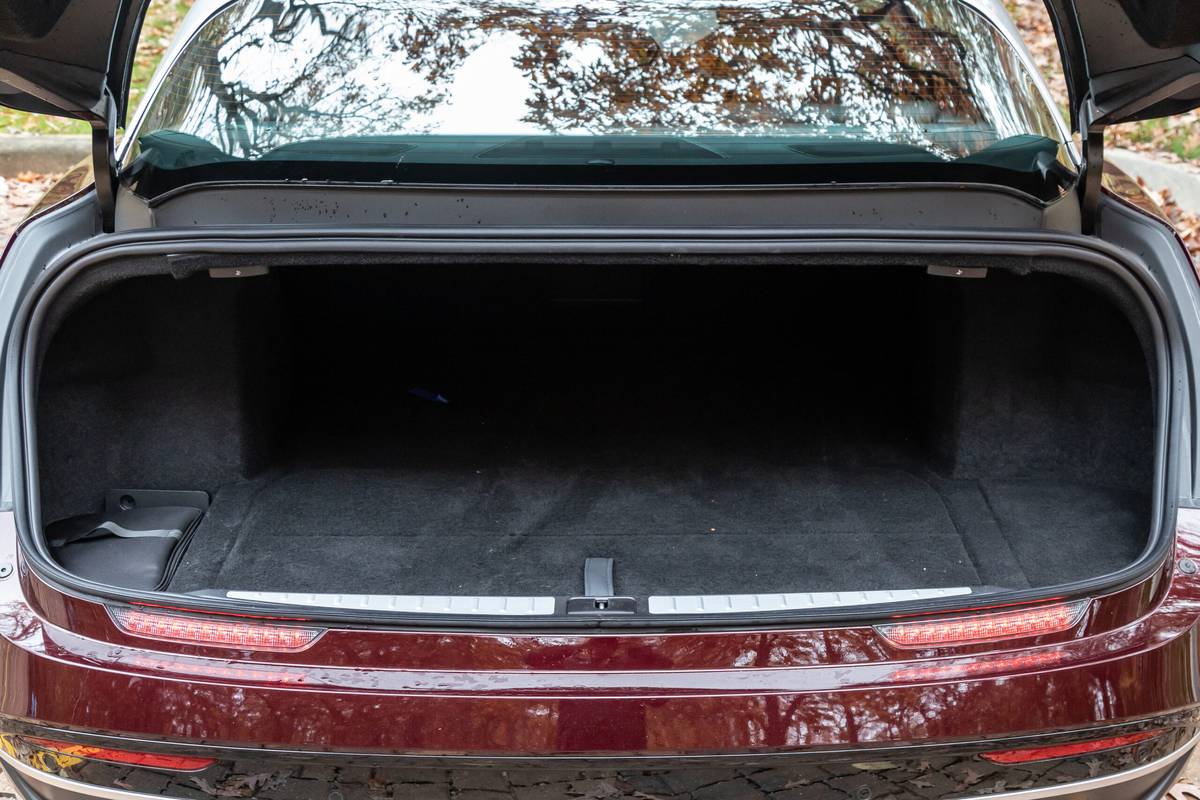
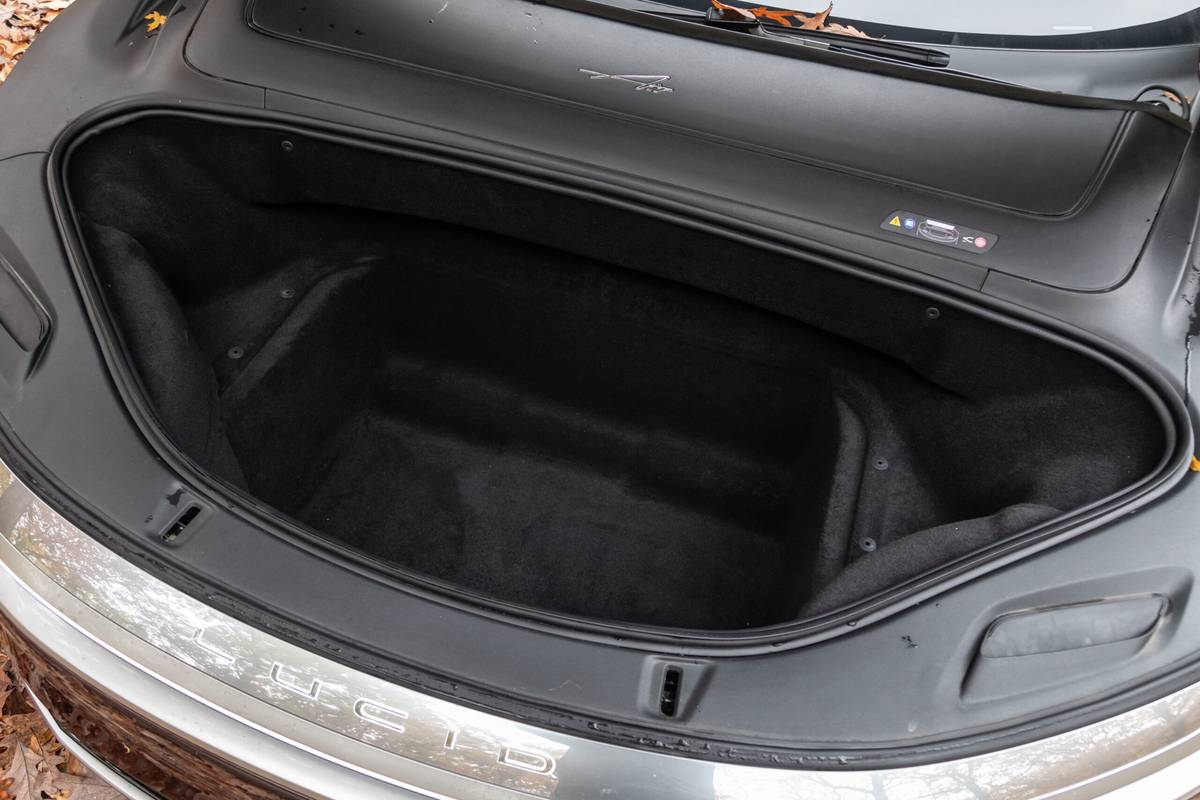
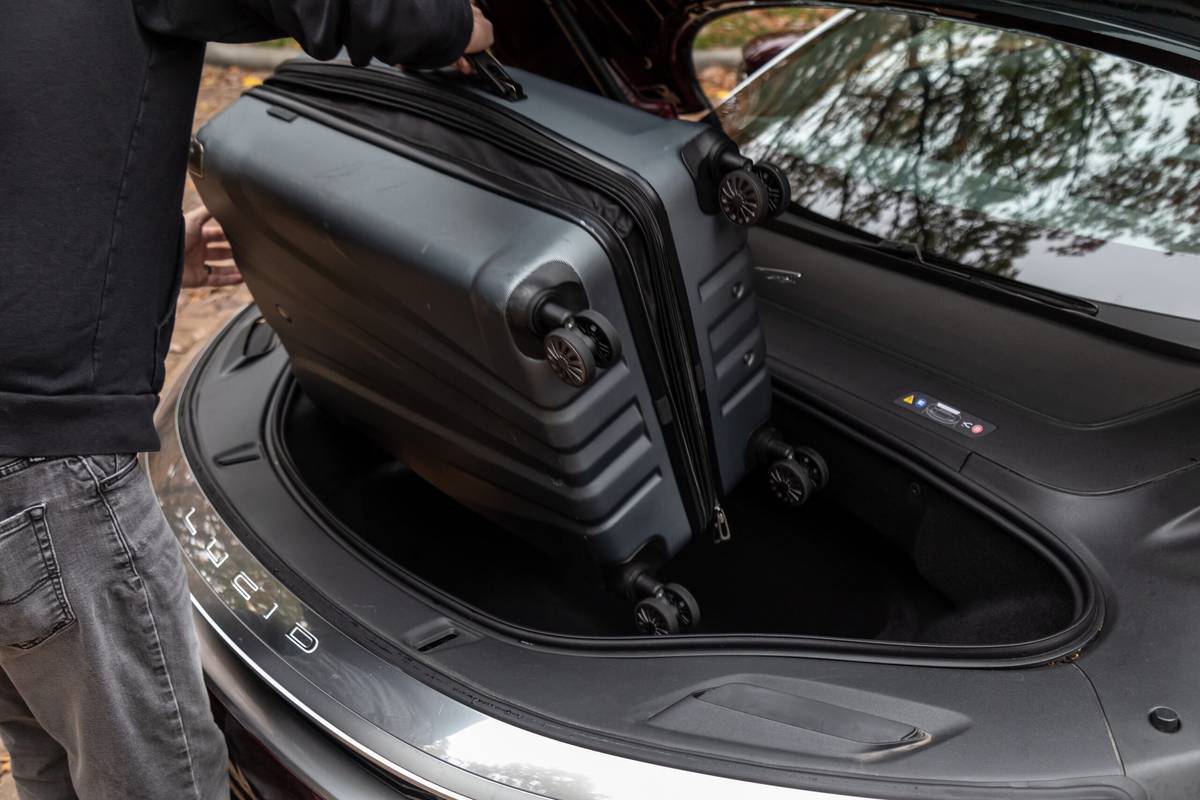
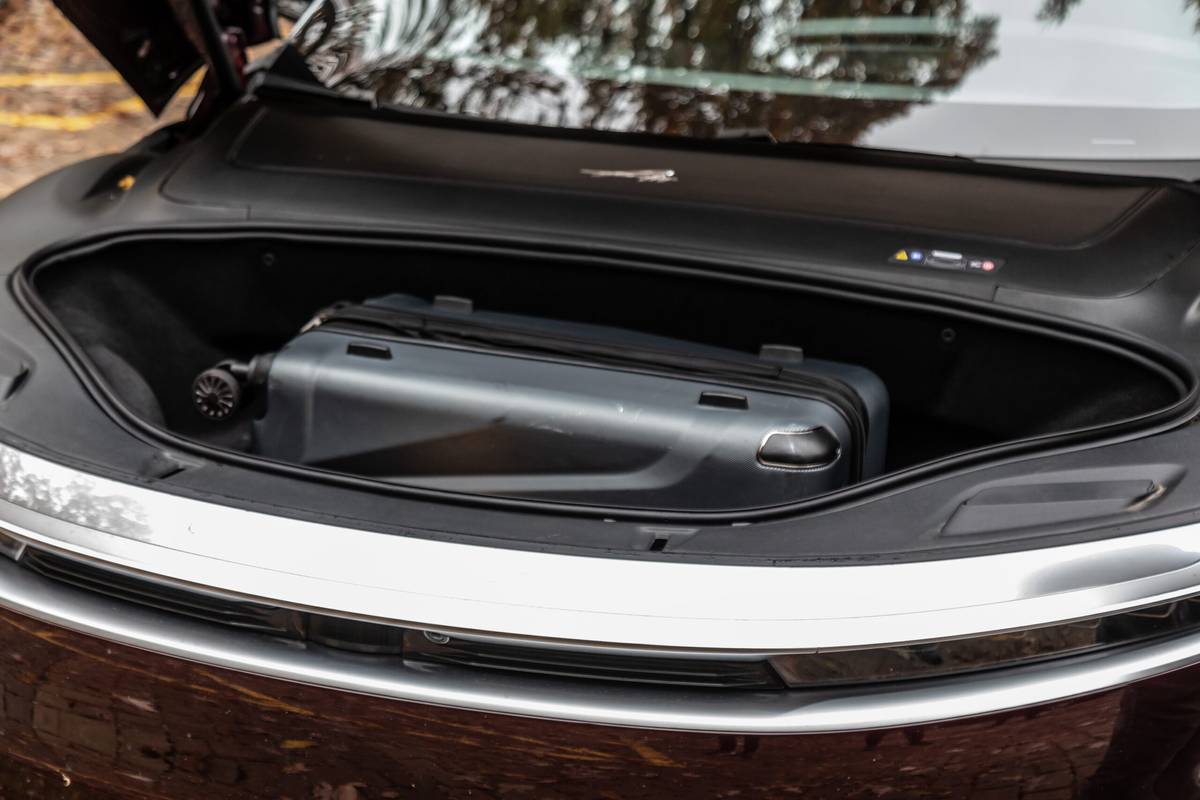
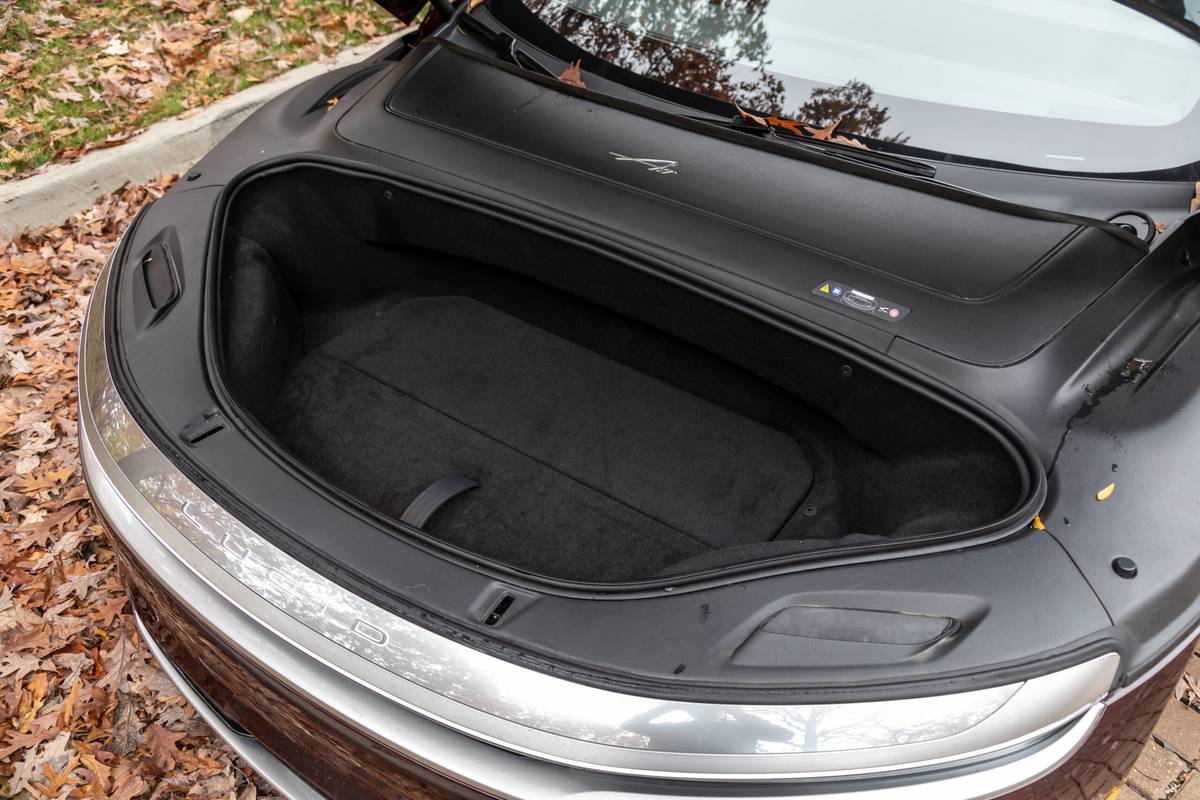







Car Seat Fitment
In our official car seat tests, the Lucid Air fit two of our seats — not three across, which includes an infant seat in the middle and a booster and convertible in the outboard seats. When the infant seat was installed in the middle, it sat on top of a buckle, which breaks our rule about three seats across. One annoyance was how the Latch anchors were tough to access because you need to push past the upholstery. On the plus side, the top tether anchors were easily accessible, the head restraints are easily removed to fit taller seats, and the rigid seat belts made it easy for kids in boosters to buckle in on their own.
The first thing I noticed when installing my personal child safety seats in the Lucid was how the rear doors open to nearly 90 degrees. This is huge when it comes to putting in bulky car seats, as well as general backseat ingress and egress. I had a high-back booster in one outboard seat, a forward-facing convertible in the other and a grandma in the middle who had a little trouble with buckle access because of the car seat overlap, but it was doable for a short ride. Also related to carrying around children, I really appreciate the power shades in the rear side windows and rear glass.
Home Charging
The Lucid is capable of powerful home charging at up to 80 amperes on a 100-amp circuit that can add up to 80 miles of range per hour. Our Level 2 home charging circuits are a bit more modest, however, and at 40 amps, we charged the Lucid Touring’s 92-kWh battery from 13%-100% in 9 hours, 55 minutes, adding 333 miles of range at an average rate of 34.5 miles of range per hour. Because the Air Touring is so efficient (traveling more miles using the same amount of energy), it adds more miles of range per hour when charging than a Mercedes-EQ EQS Sedan, which adds between 20-30 miles of range per hour at 40 amps (also the EQS’ maximum Level 2 charging rate). Fully charged, our Lucid test car showed 380 miles of predicted range at the end of the charging session, which compared well to its 384 miles of rated range.
DC Fast Charging
Our DC fast-charging experience was more eventful than our home-charging experience, which isn’t unusual because on-the-road DC fast charging is rarely consistent, or optimal, depending on the vehicle, charger and ambient conditions.
After about 20 minutes of driving, and with the battery at 20% charge, we hooked up to a 350-kW-capable DC fast charger at an EVGo station and charged to 80%, adding 234 miles of range in 44 minutes. Surprisingly, this session only saw maximum charging power of 85 kW, far under the Touring’s 250-kW capability. When a car underperforms at a fast charger, it’s often hard to diagnose whether it’s the car, the charger or the conditions. But in the Lucid Air’s defense, we didn’t precondition the battery ahead of plugging in, and the ambient conditions were chilly for optimum results with the outside air temperature around 40 degrees Fahrenheit. Either way, it’s a reminder that fast charging isn’t always fast, nor as fast as it can be, because of so many variables that can affect charge times.
Driving the Touring


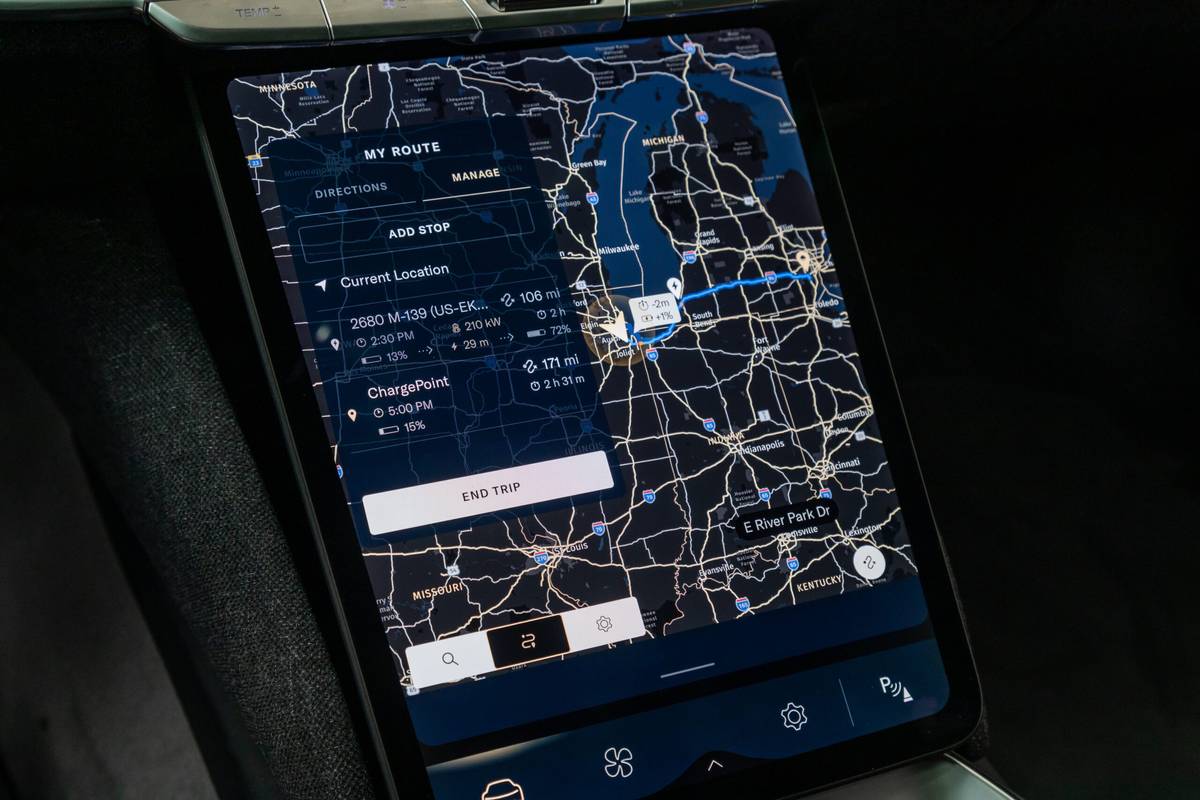
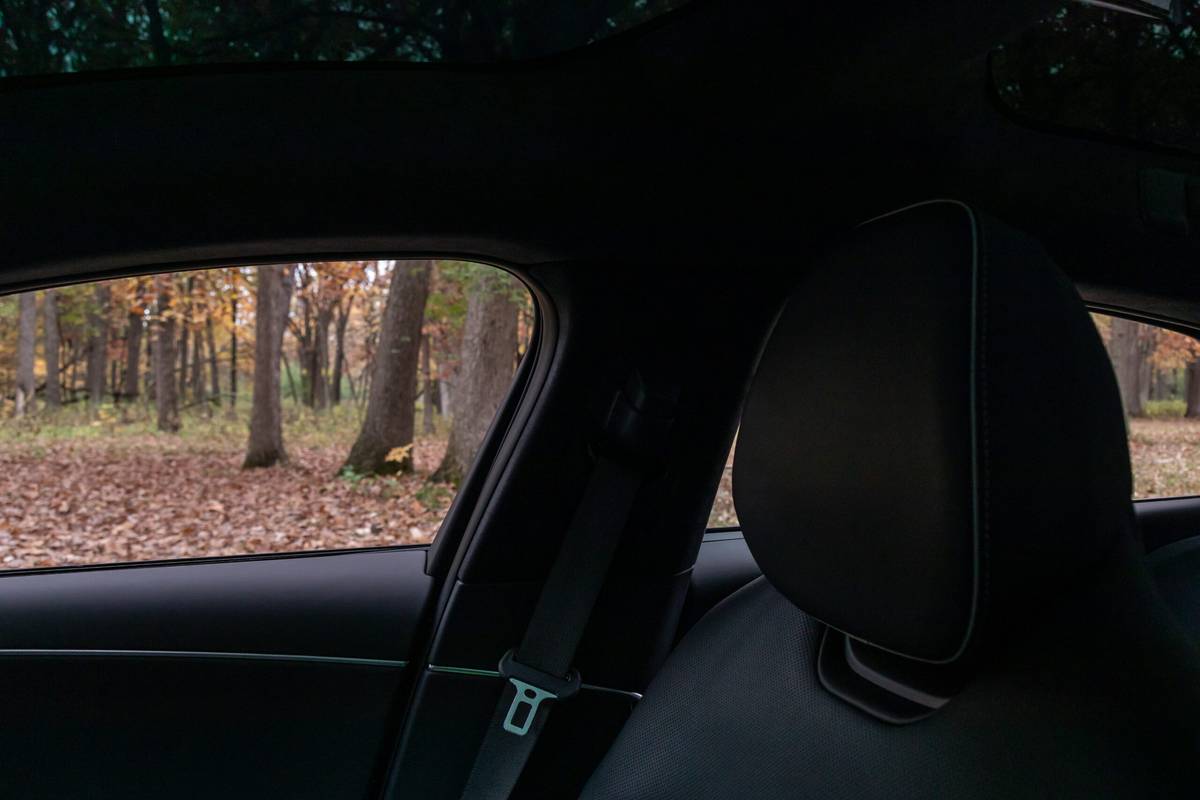
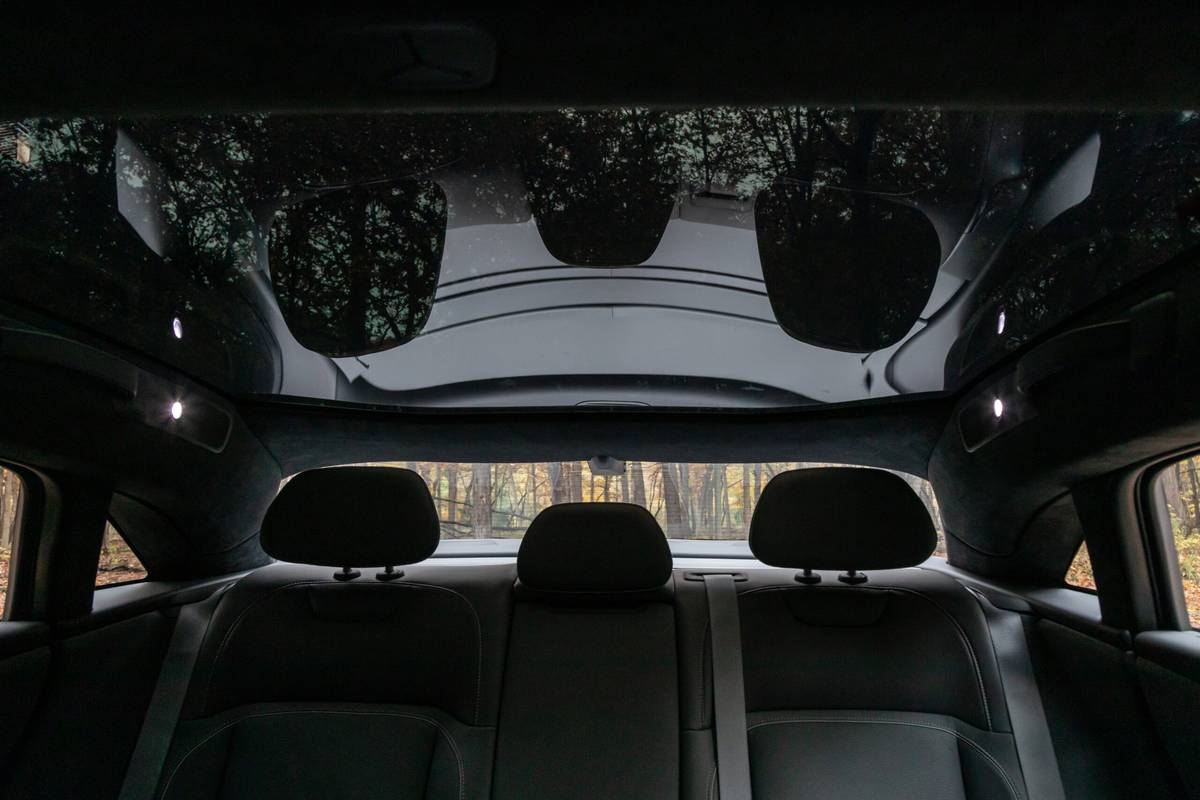



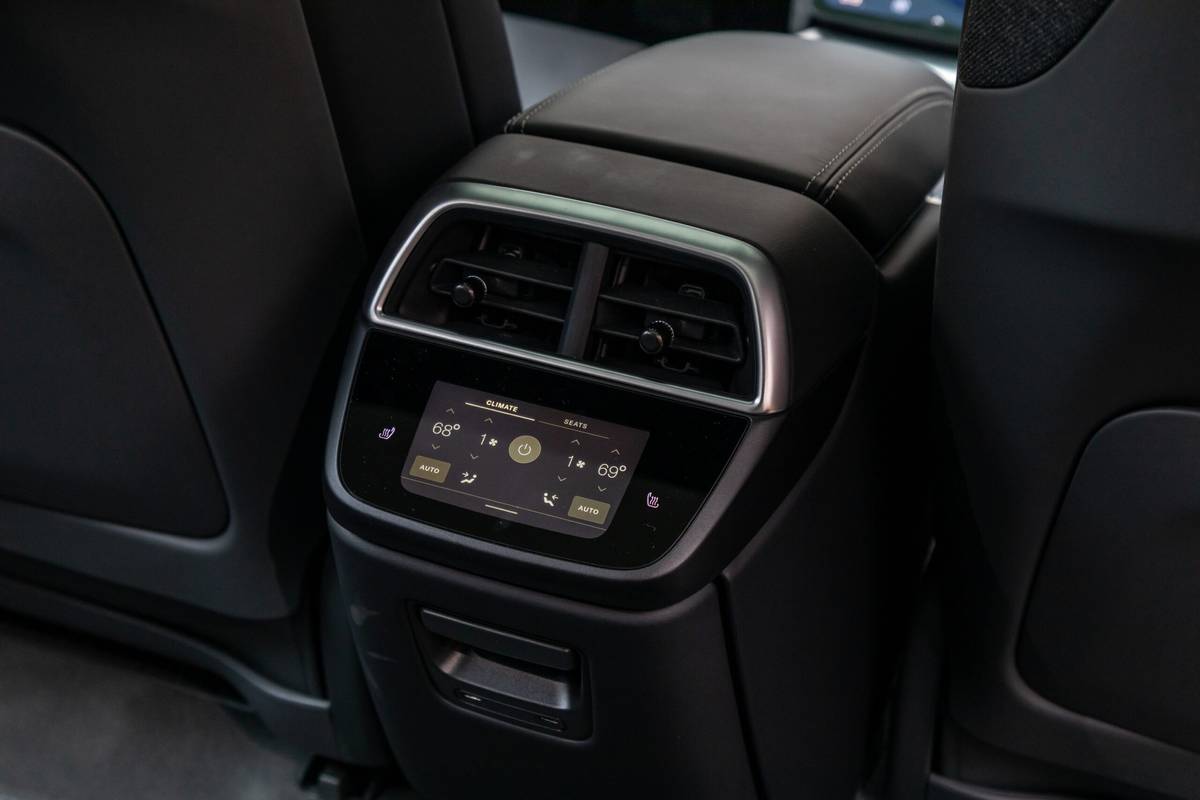
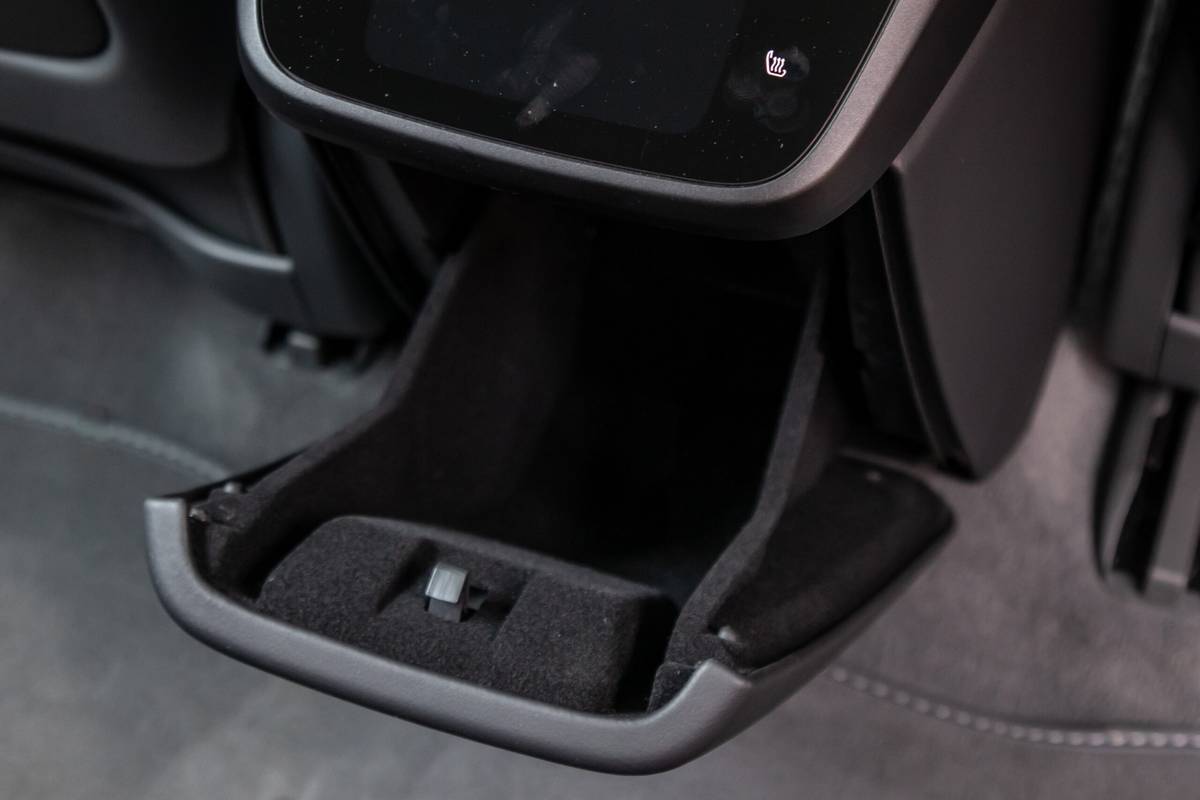
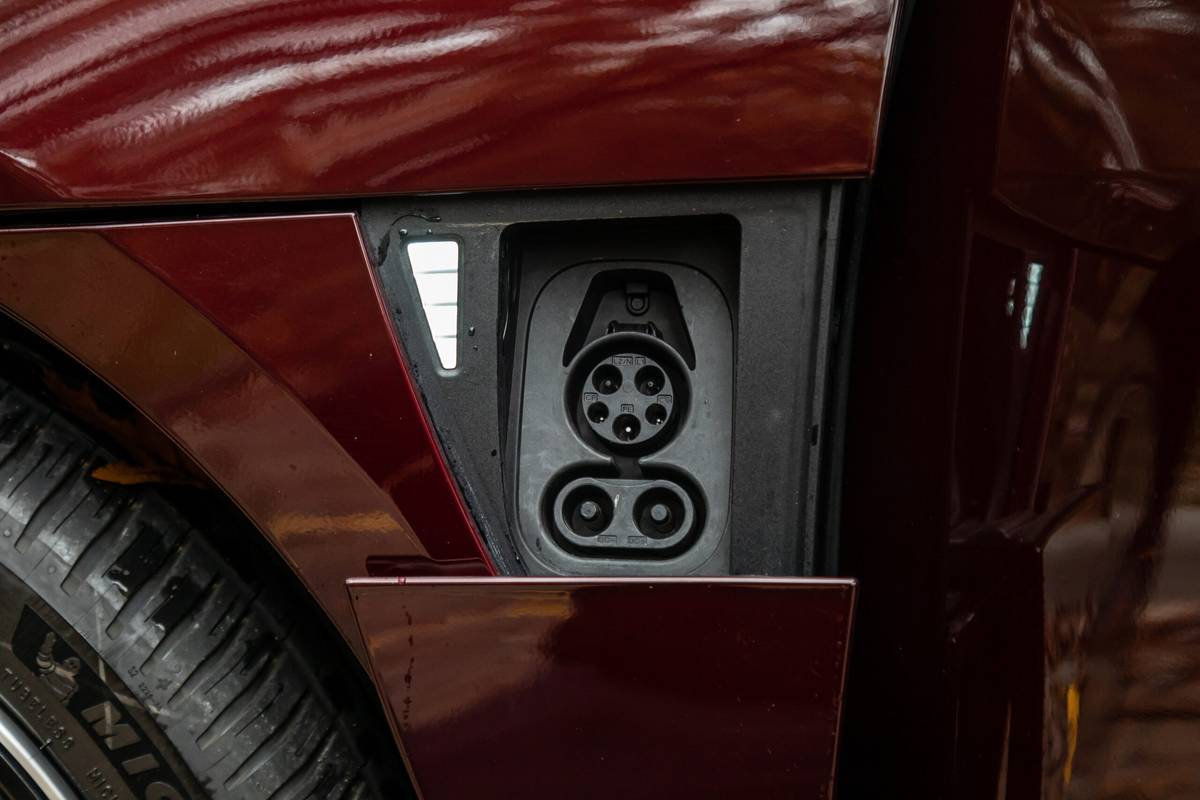

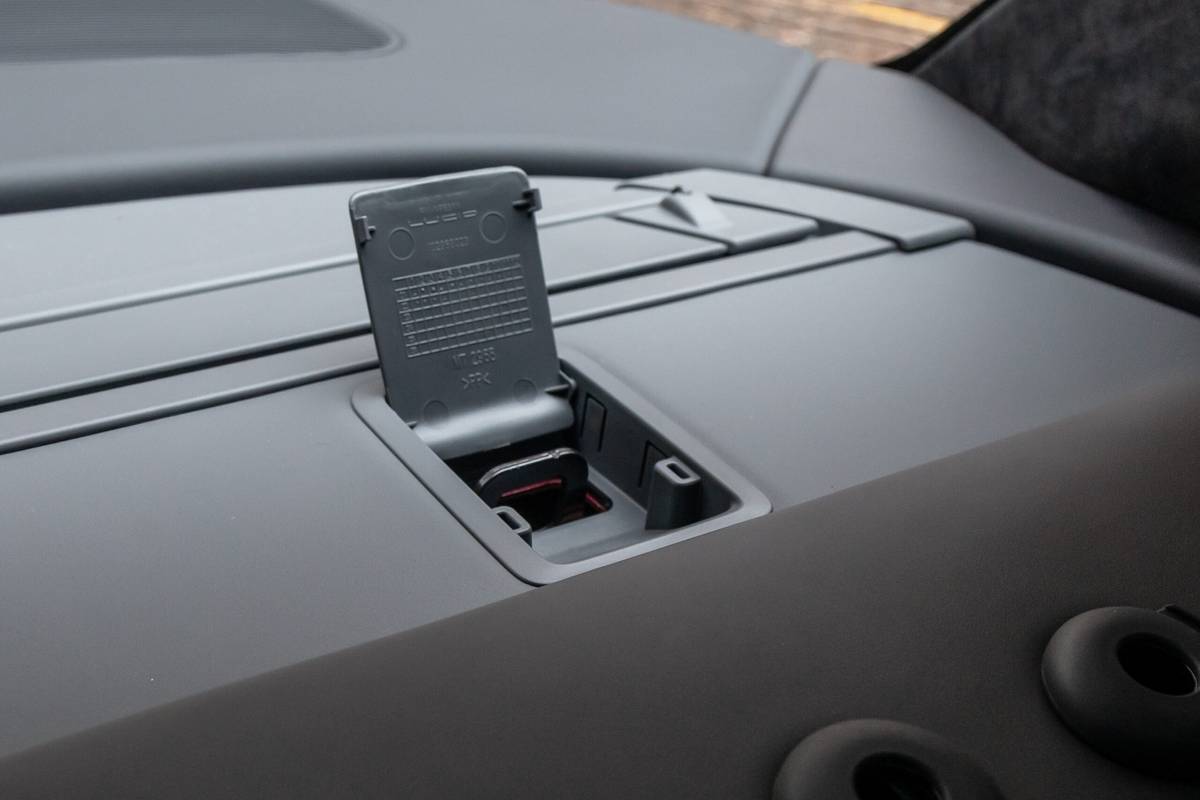
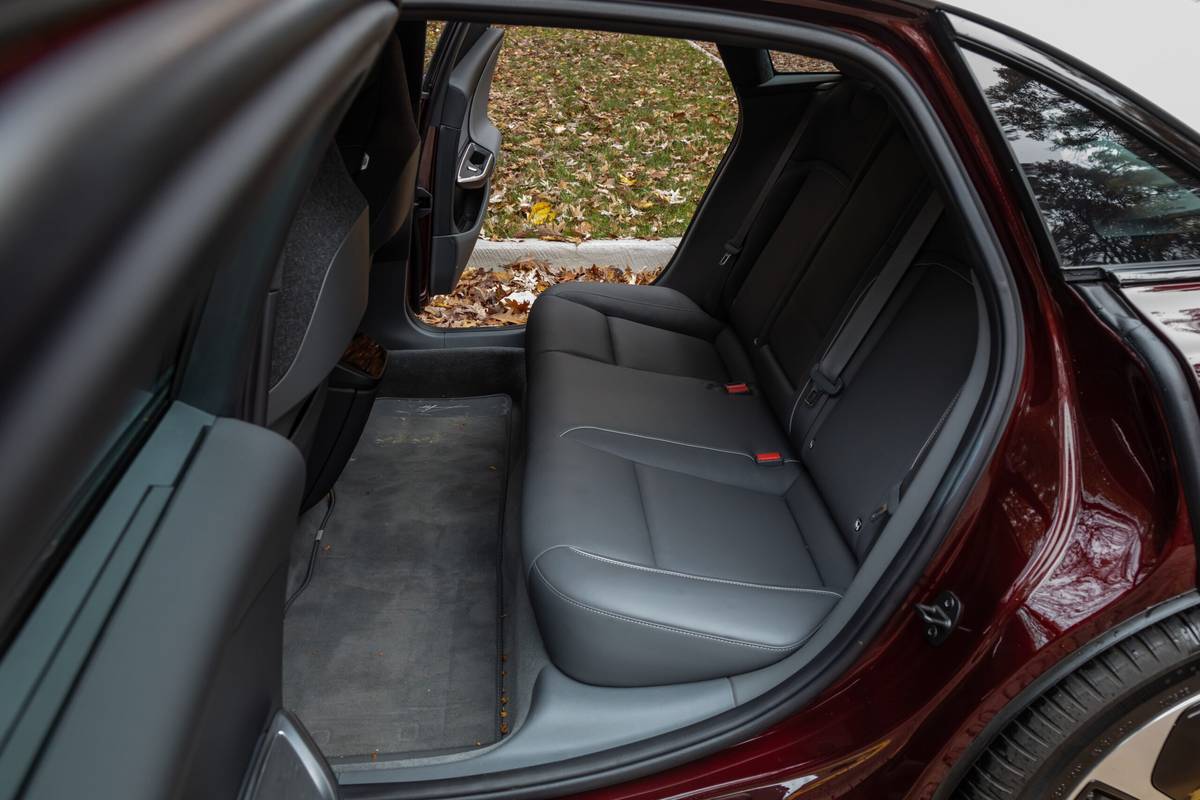

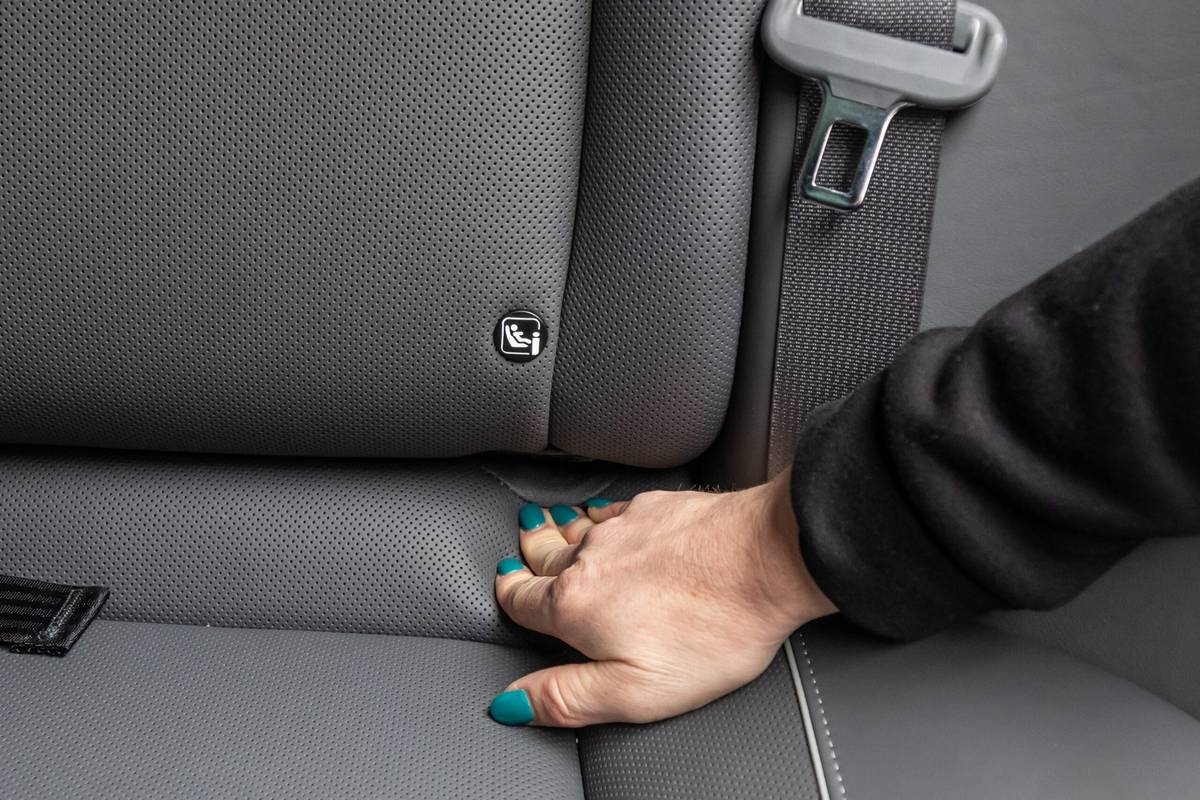
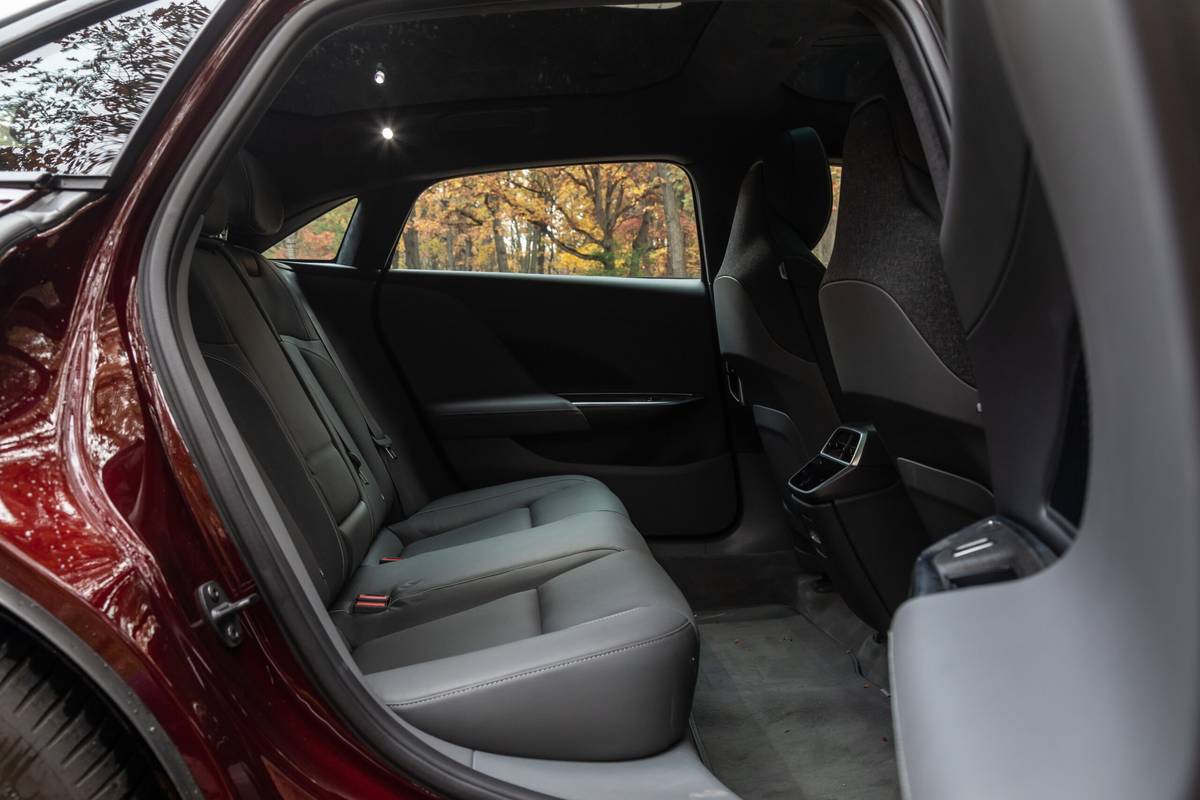
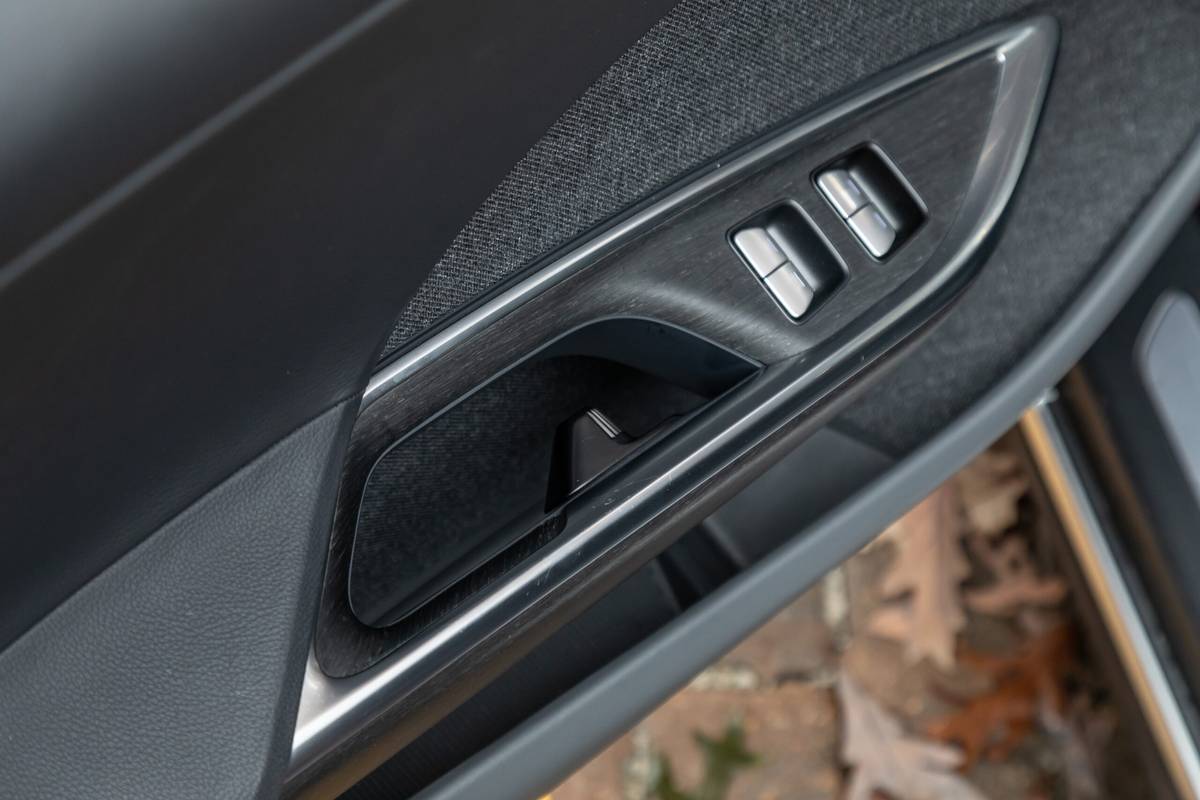
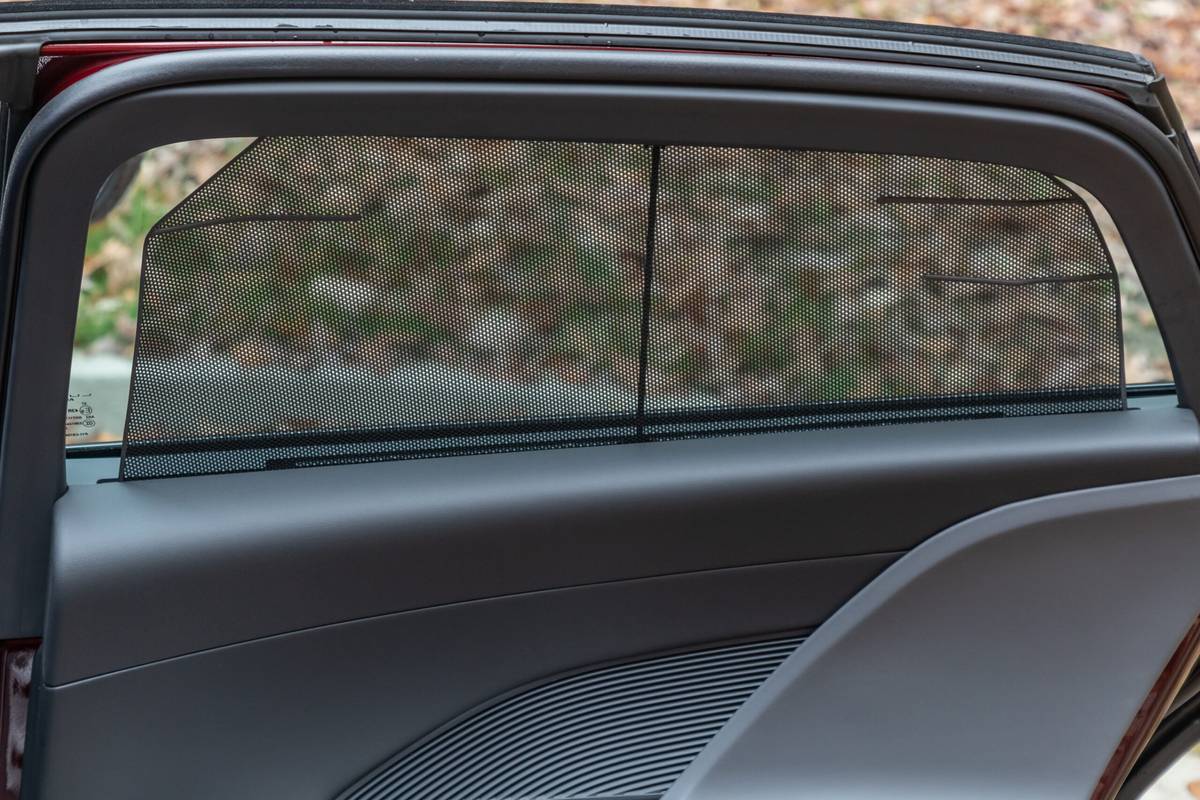
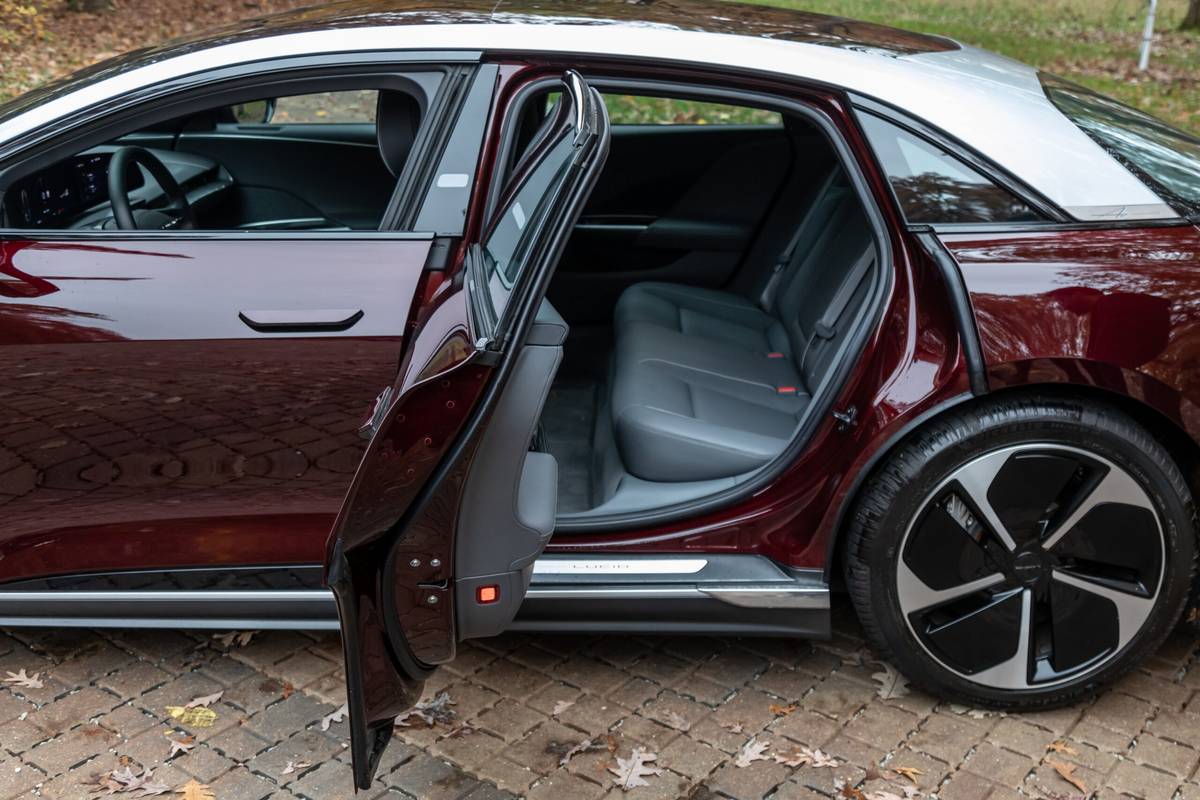
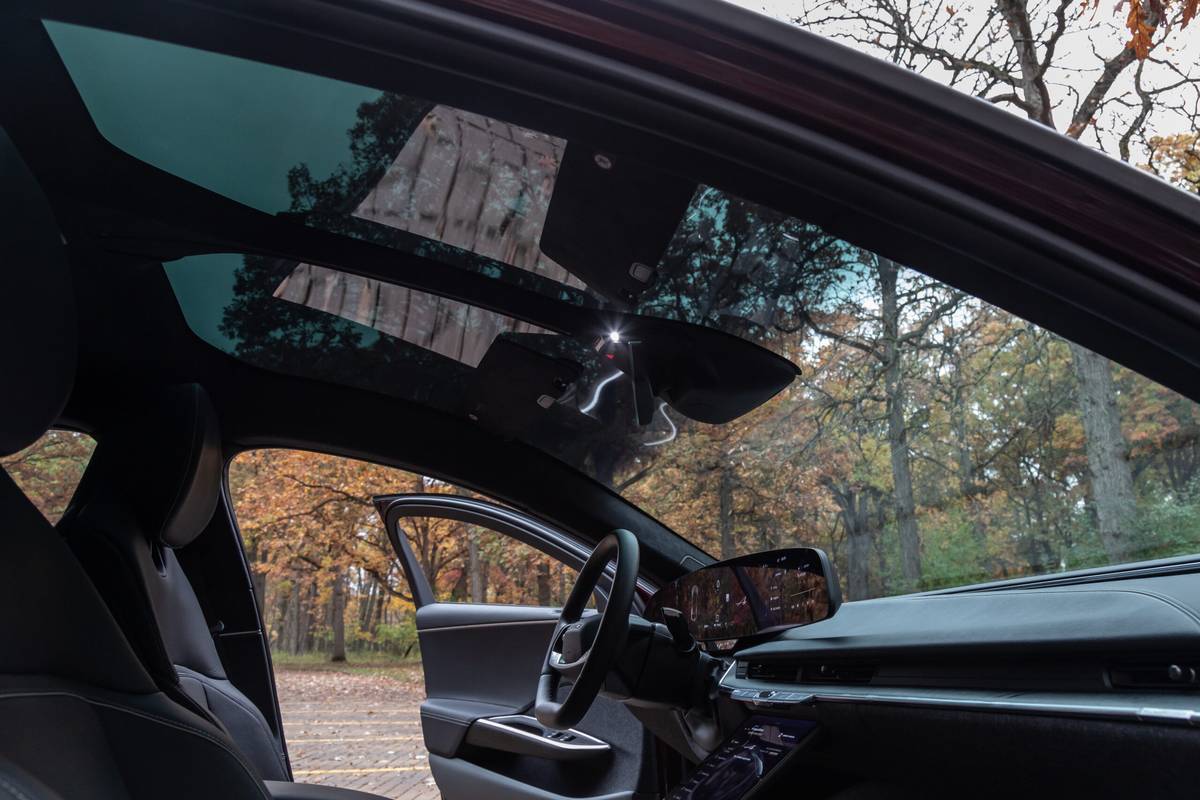
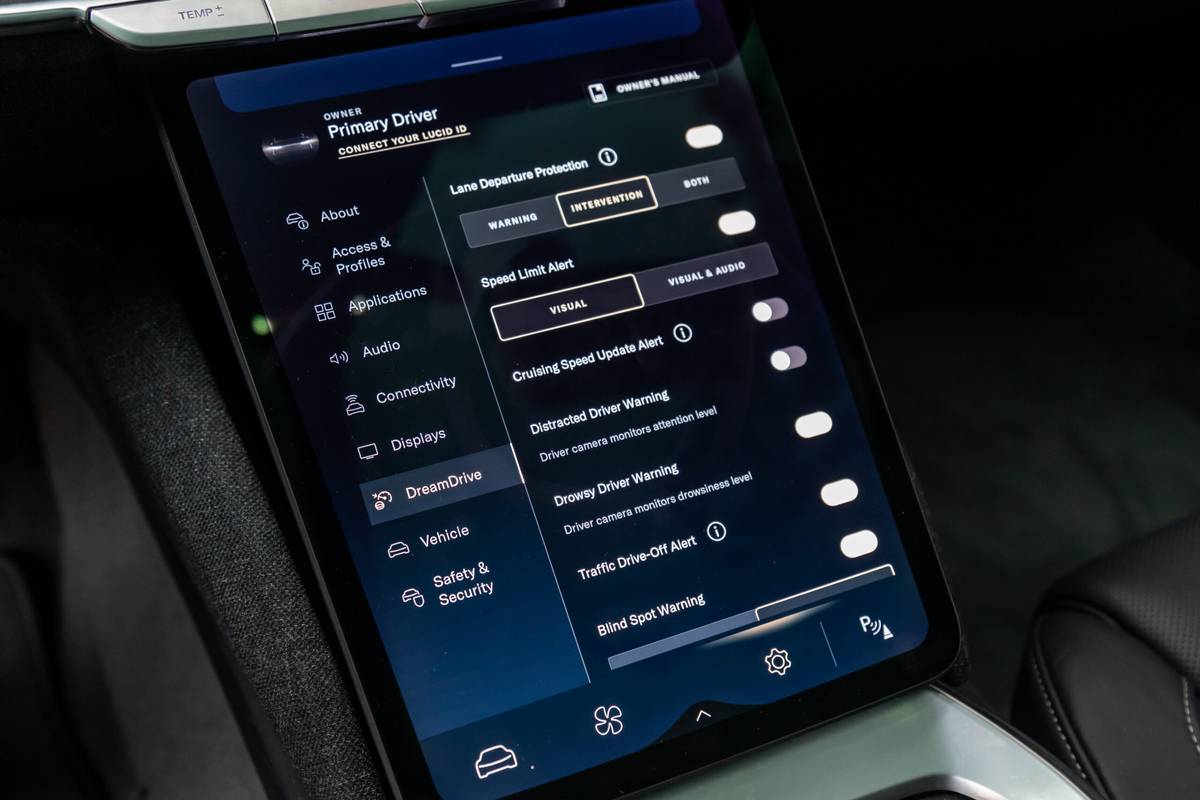
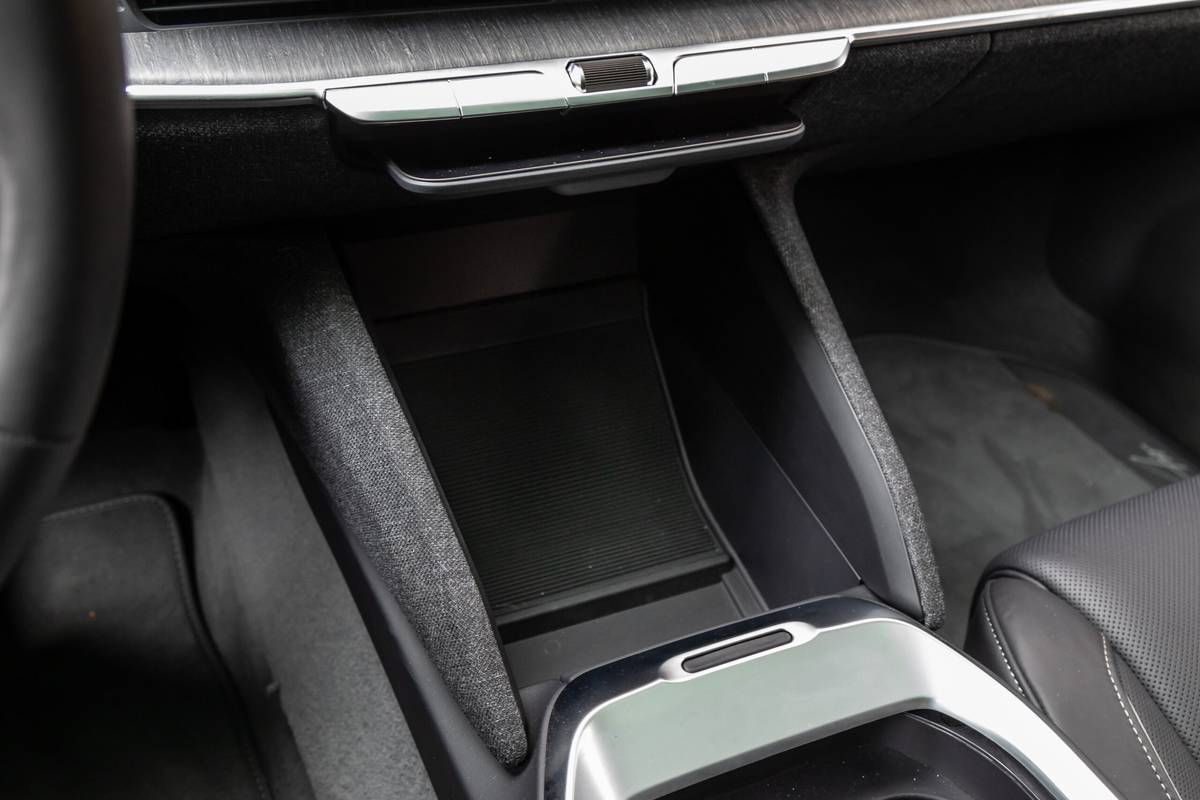
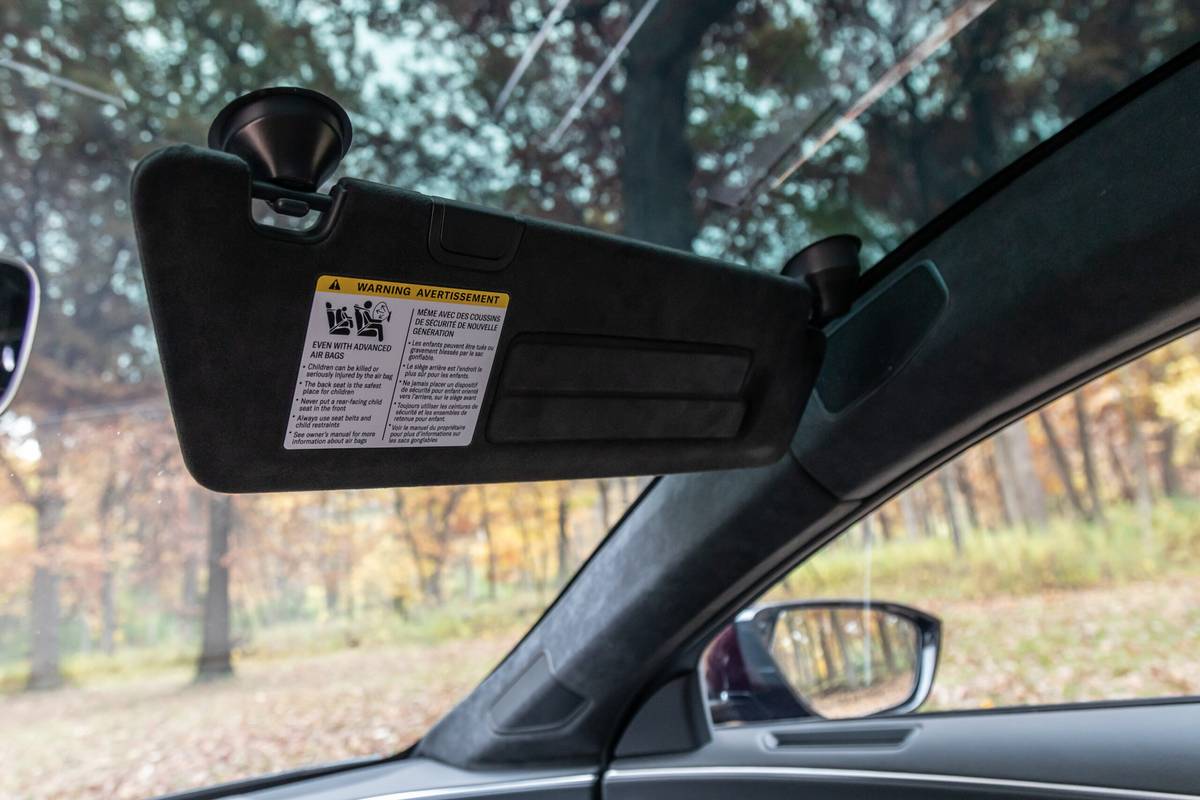
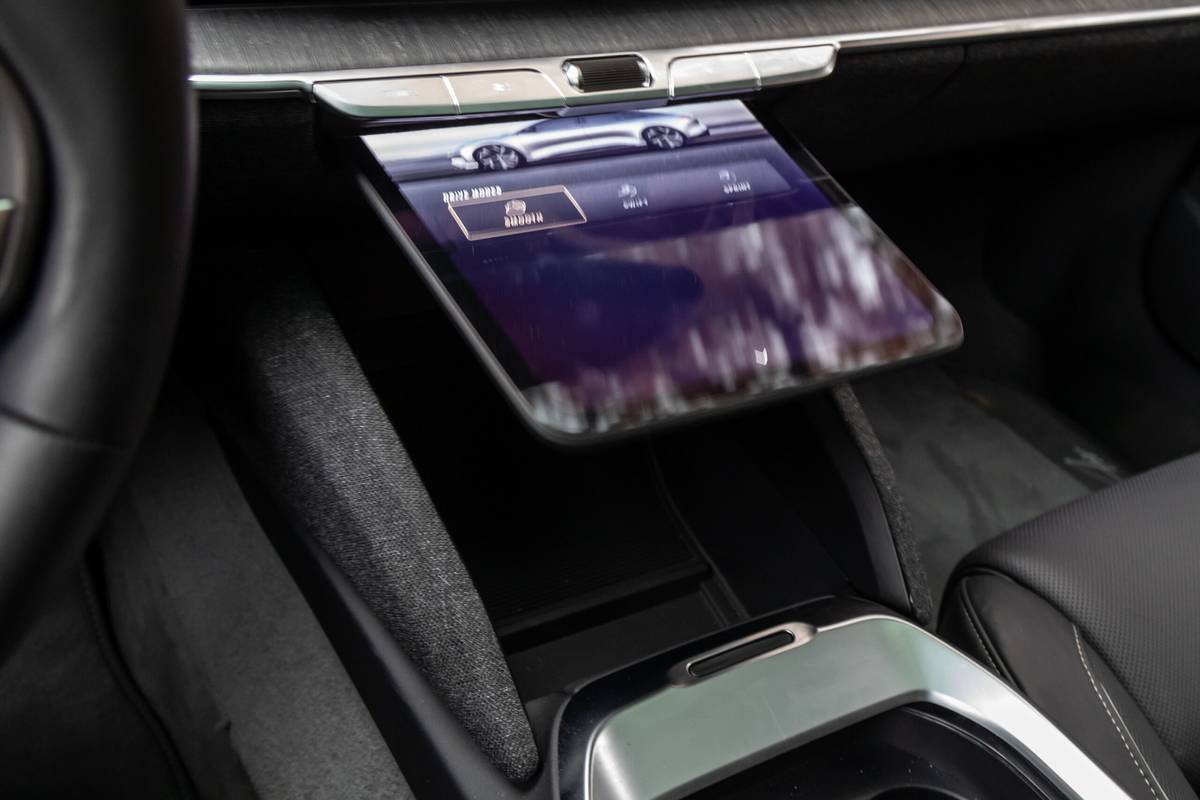

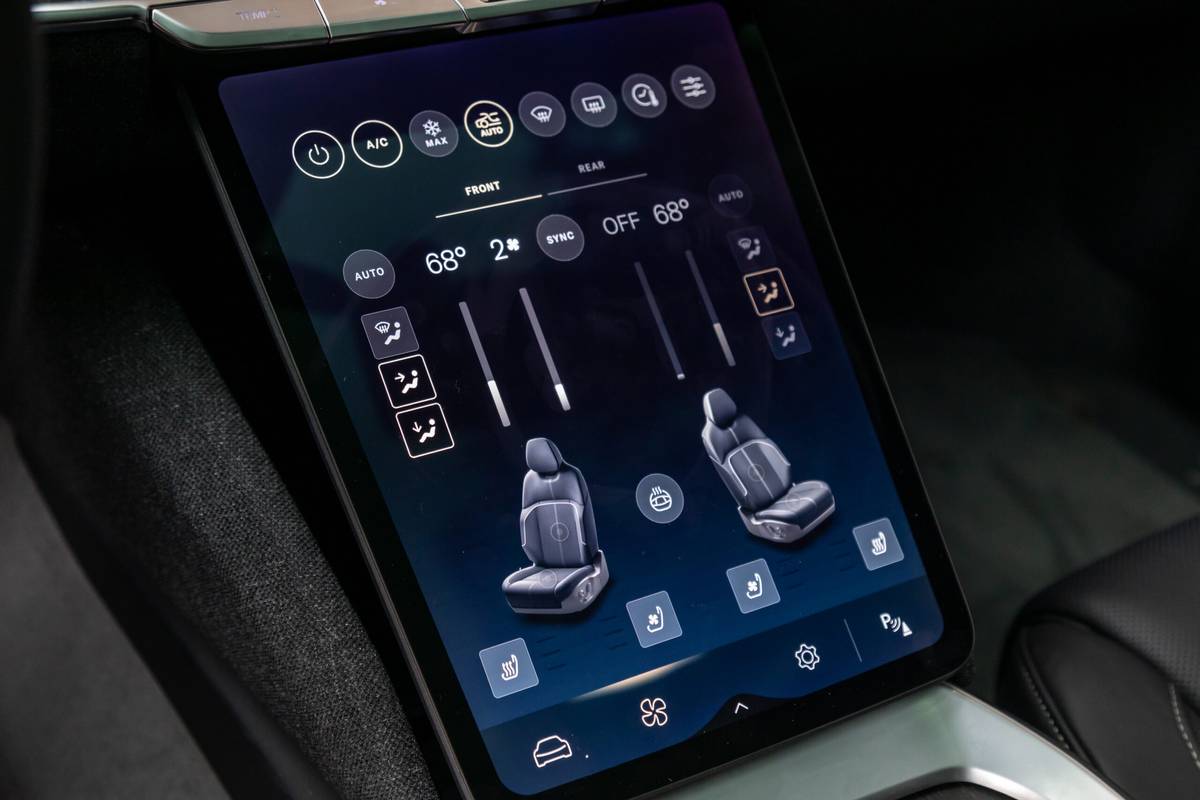
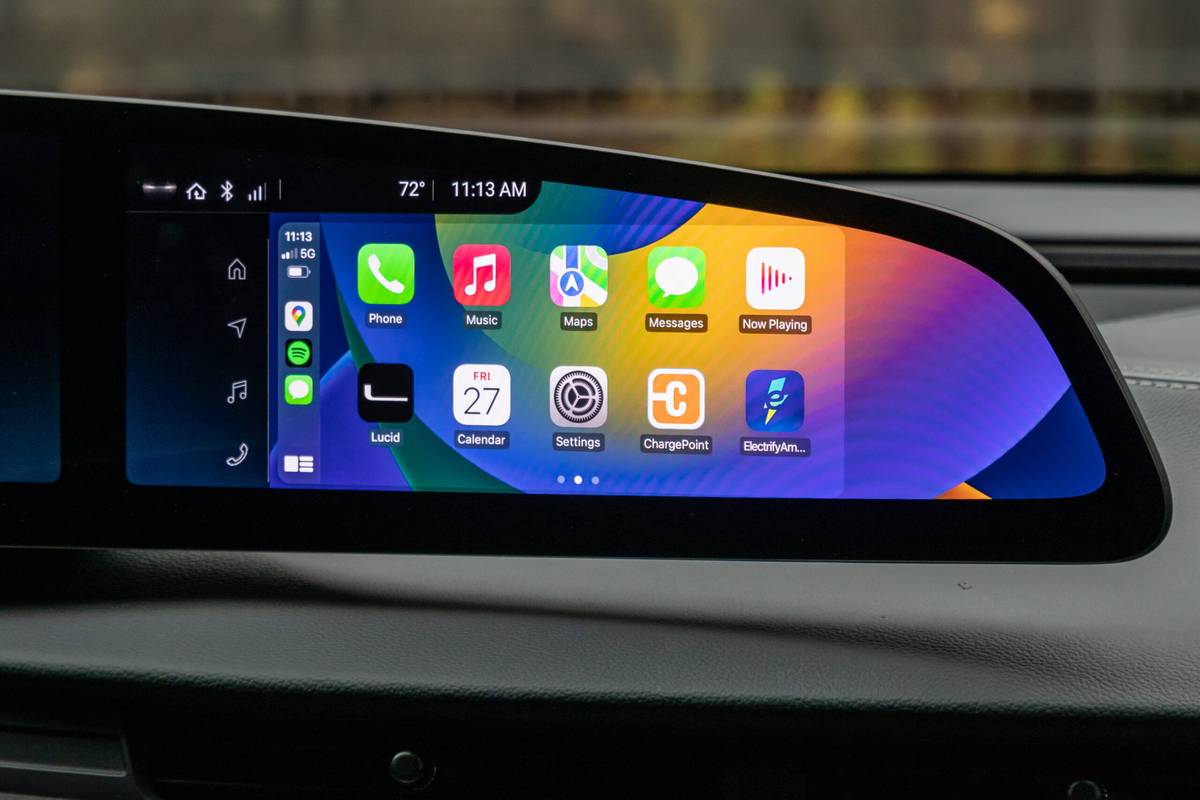
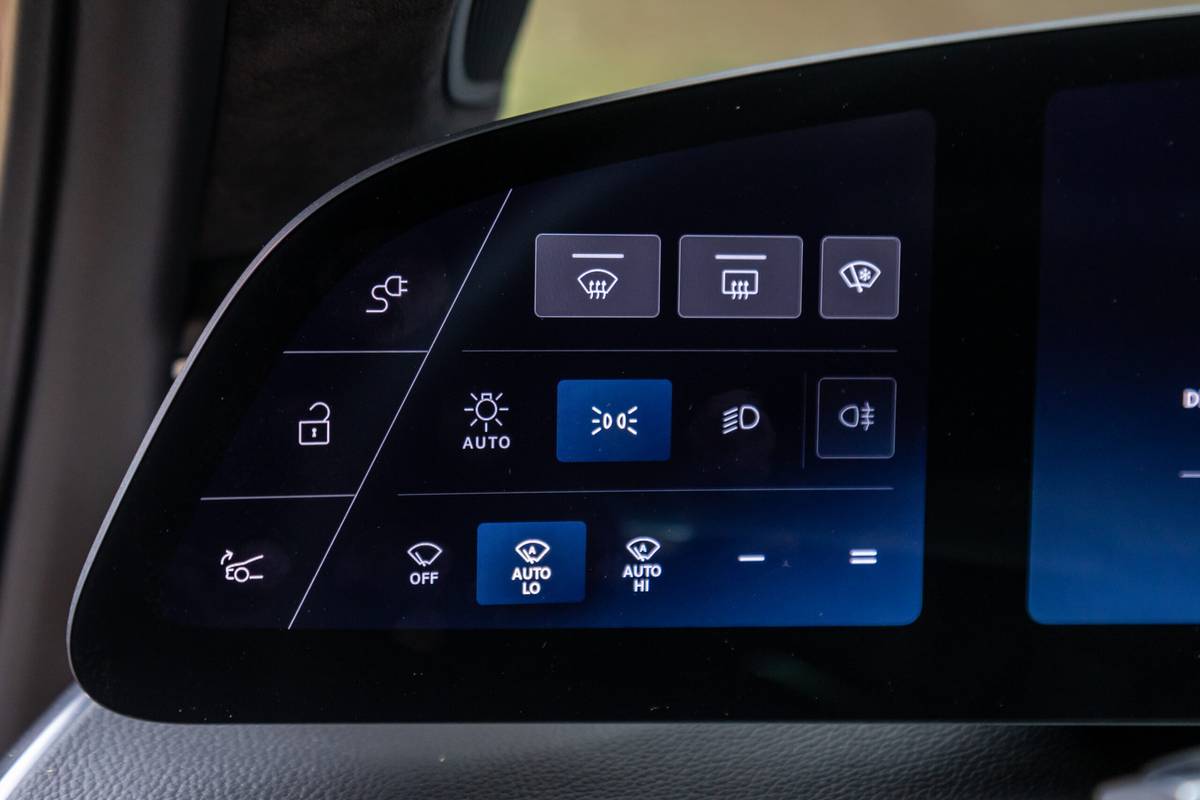
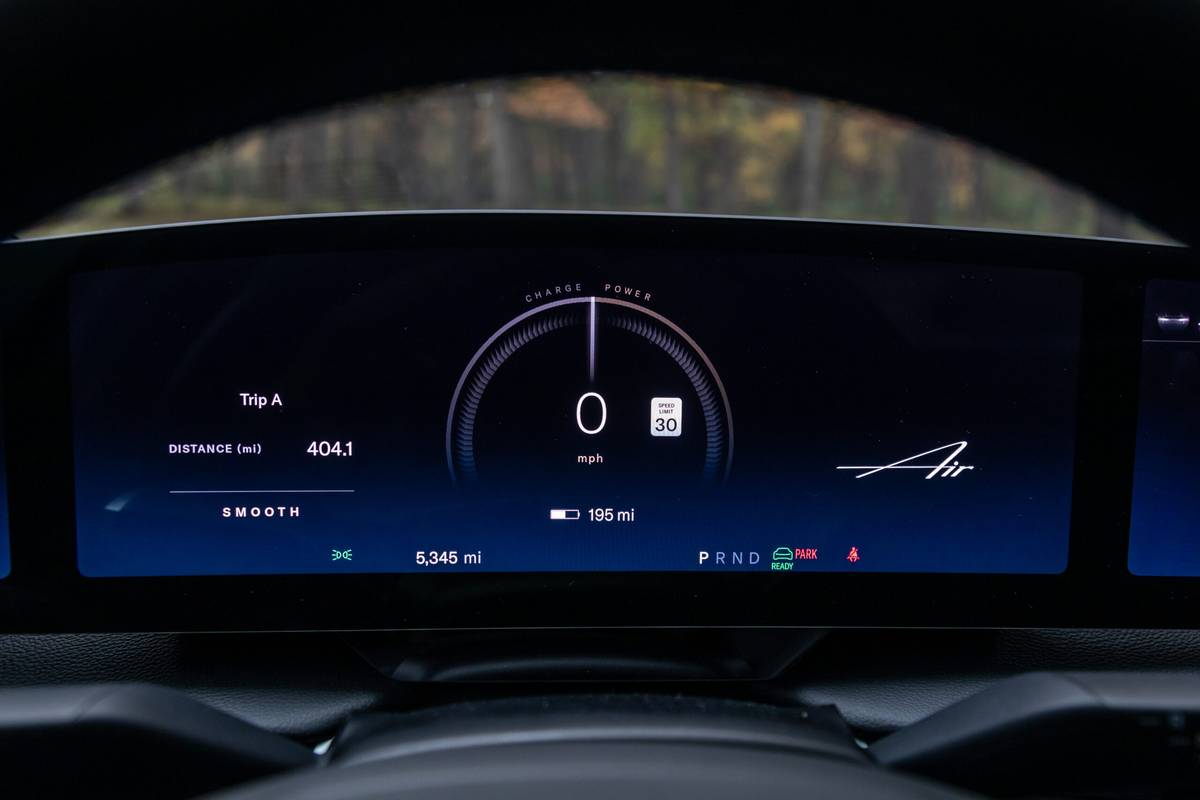
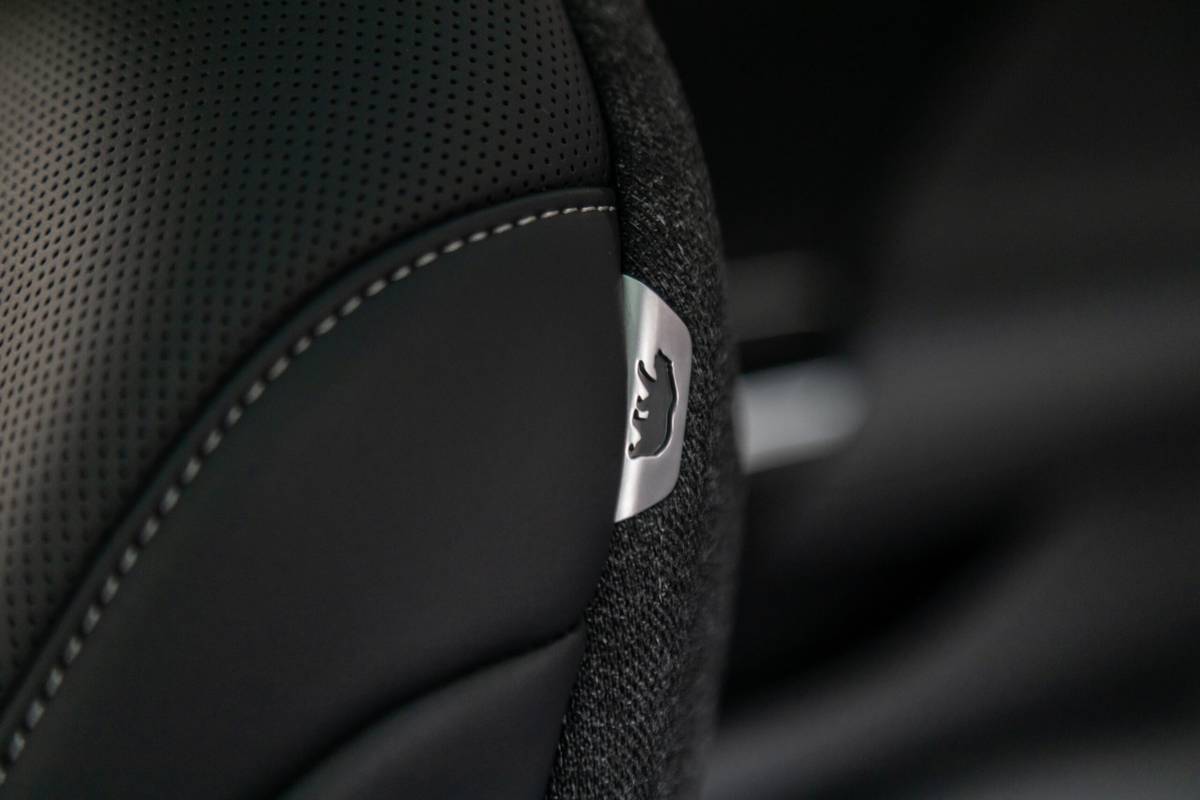
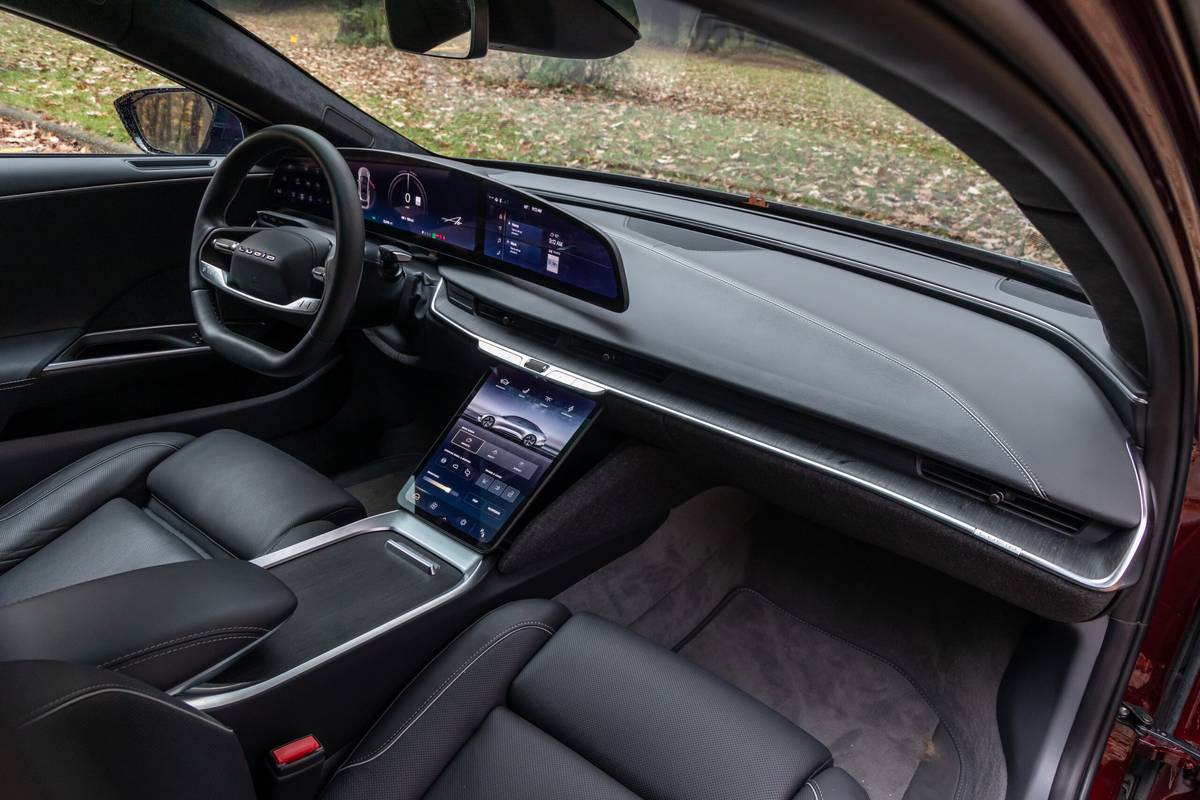








































The Touring’s 620 hp may seem unimpressive after hearing about the 800 hp, 1,000 hp and 1,200 hp in versions of other Airs, but I guarantee you most people will still be impressed by the Touring’s acceleration — not only in its specs, which cite 0-60 mph in 3.4 seconds, but also by the immediacy of the power delivery that’s violent even in this milder version of the Air.
On the flip side of the violent acceleration is the Air’s driving efficiency. While driving normally in temps around 45-55 degrees, it was common to see the EV’s driving efficiency in the range of 4 miles per kWh, which extrapolated across the 92 kWh of battery capacity puts it near its rated range without much trouble. Even with highway driving and trying to drain the battery as quickly as possible for a charging test, we still measured 3.5 miles per kWh after 220 miles of inefficient driving.
I likened the Air’s driving dynamics as a cross between the Tesla Model S and Model 3, with the size more similar to the Model S, and the agility and sharpness in how it drives more similar to the Model 3. It has a fine balance of comfort and handling, though some of our editors were a bit put off by its busy ride on city streets.
The Air wasn’t without annoyances, however. Forward visibility is hampered by large A-pillars that block visibility at intersections, though there are front assists to help with cross-traffic. And for how much criticism we give cars with touch-sensitive or digital controls that can sometimes misfire, I kept accidentally hitting the large wiper blade button at the end of the turn-signal stalk when I used the turn signal. We also encountered inconsistencies with the keyless access where the key fob wasn’t always responsive with the vehicle for locking and unlocking.
For all of the digital screen space in the Air, which is impressive in terms of clarity as well as user-friendliness, the Apple CarPlay screen size isn’t very large — but that might be OK because the full native navigation has trip-planning functionality that Google Maps via CarPlay can’t do yet in the Lucid. This trip-planning functionality, which is surprisingly still rare in most EVs that aren’t Teslas, will tell you how far you can go before needing to charge when a destination is entered and is a sure way to help reduce range anxiety.
More From Cars.com:
- Lucid Gravity Comes From a Solid Foundation, Will Debut in L.A.
- Long-Range Strike: Lucid Air EV Range Officially EPA-Rated Up to 520 Miles
- Lucid Jumps on the Tesla EV Charging Standard Bandwagon
- Lucid Offers $7,500 EV Credit for Select Air Trims
- 2025 Lucid Gravity Up Close: Grounded in Luxury
New Pricing
Lucid Air pricing has been in flux throughout the year with pricing cuts as well as available discounts and credits. When our test car was built, this 2023 Touring retailed for $128,550, including optional equipment of uplevel paint, uplevel DreamDrive Pro semi-autonomous driving system and uplevel Surreal Sound Pro audio system, as well as the glass canopy roof. Right before the 2024 Air was announced, the very same 2023 car was priced at $93,800 because Lucid included uplevel Pro features at no charge thanks to a Pro Credit when delivery was taken within seven days of the vehicle being ready for delivery; plus, a $7,500 credit was applied for cash and finance purchases.
Pricing takes another shift for 2024, which is the model year currently offered on Lucid’s configurator. There’s now a lower starting price for the Air, but it appears the Pro credit is no longer available as the online configurator shows our test car (if built today) costing $109,600.
Even so, for around $100,000, the Lucid Air Touring is a very compelling vehicle against not only other luxury EVs like a Model S or Mercedes-EQ EQS, but even traditional luxury cars like a Mercedes S-Class, BMW 7 Series or Audi A8 because in addition to its qualities as an EV, the Lucid isn’t as alienating as some of those vehicles have become thanks to its normalized user control system for multimedia and vehicle operation. Yes, there are some quirks that come along with it, but there’s no question the Lucid Air Touring — even with its less headline-worthy specs versus other Airs — is a lot of EV, and a lot of luxury, for the money.
Cars.com’s Editorial department is your source for automotive news and reviews. In line with Cars.com’s long-standing ethics policy, editors and reviewers don’t accept gifts or free trips from automakers. The Editorial department is independent of Cars.com’s advertising, sales and sponsored content departments.

Managing Editor Joe Bruzek’s 22 years of automotive experience doesn’t count the lifelong obsession that started as a kid admiring his dad’s 1964 Chevrolet Corvette — and continues to this day. Joe’s been an automotive journalist with Cars.com for 16 years, writing shopper-focused car reviews, news and research content. As Managing Editor, one of his favorite areas of focus is helping shoppers understand electric cars and how to determine whether going electric is right for them. In his free time, Joe maintains a love-hate relationship with his 1998 Pontiac Firebird Trans Am that he wishes would fix itself. LinkedIn: https://www.linkedin.com/in/joe-bruzek-2699b41b/
Featured stories











